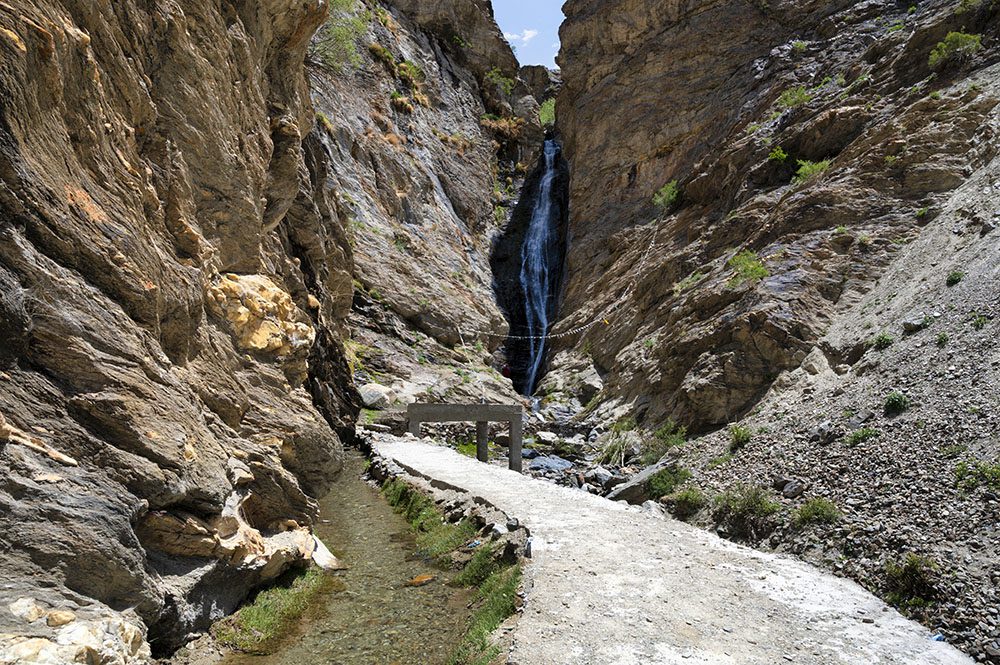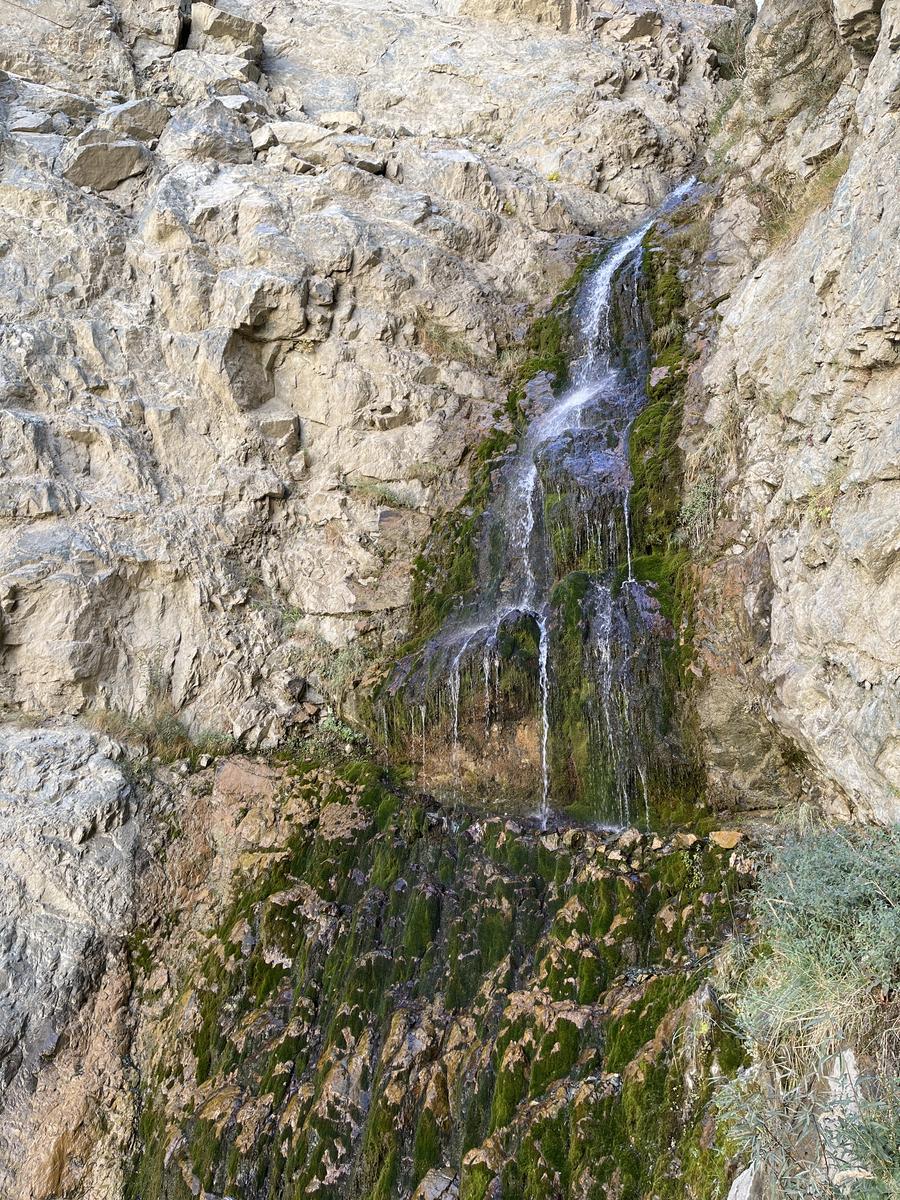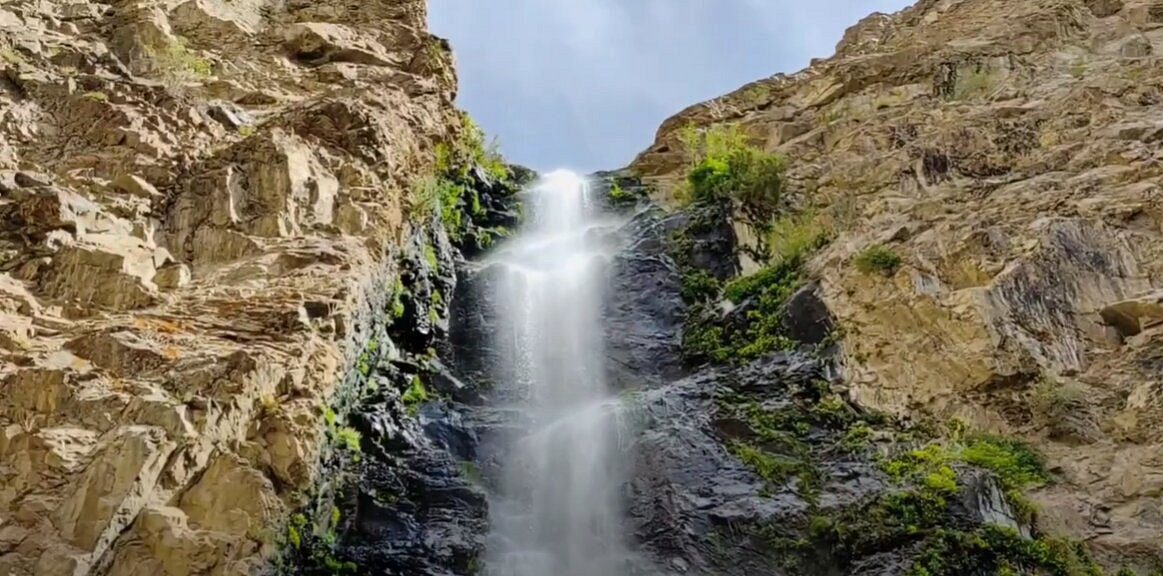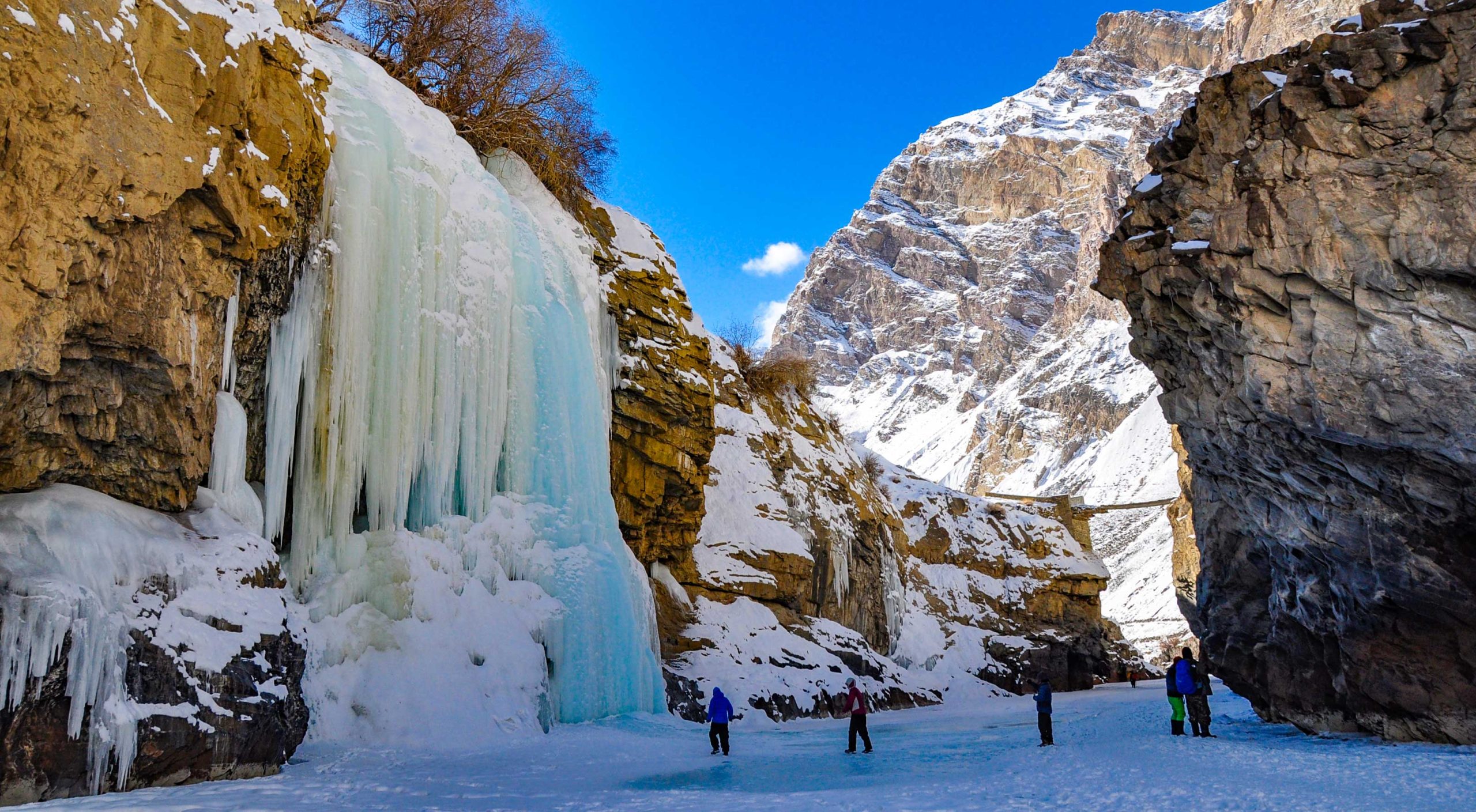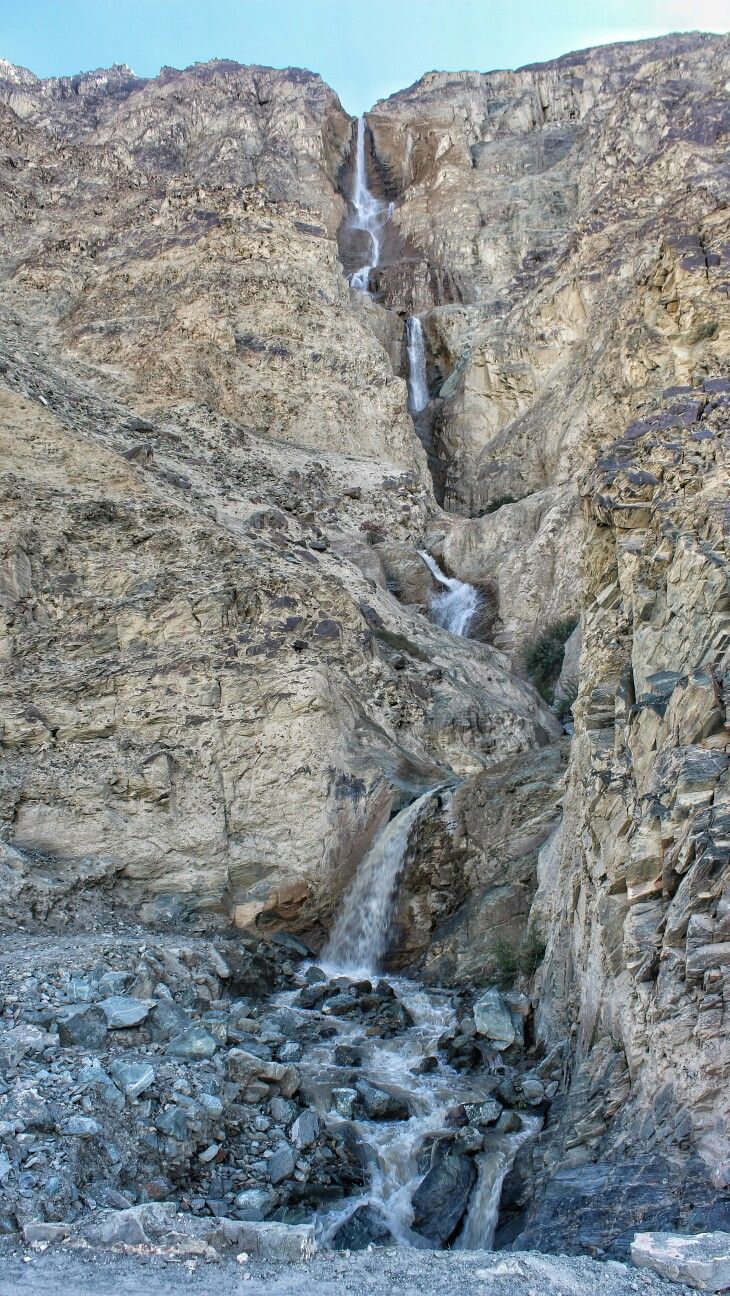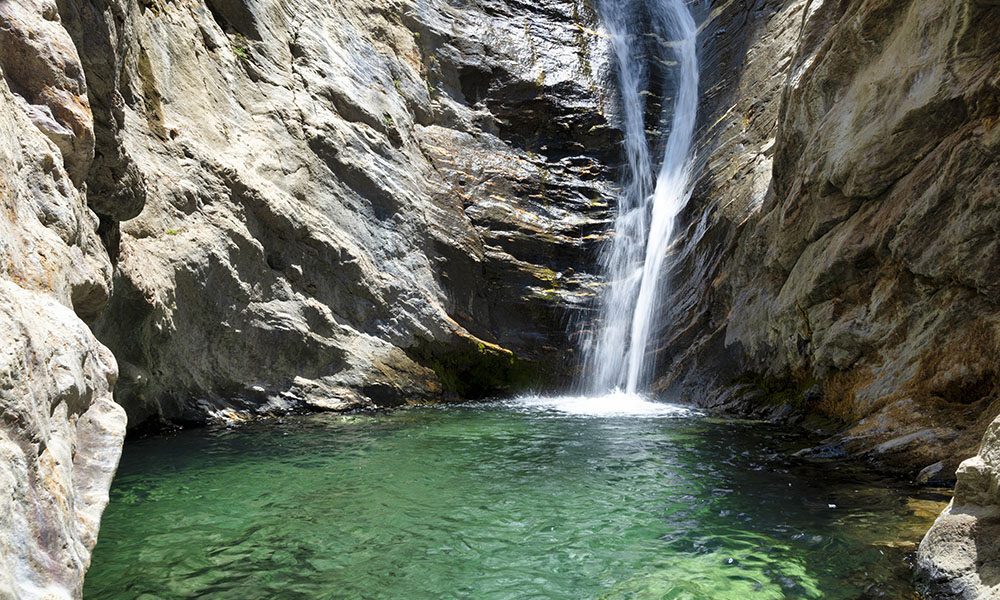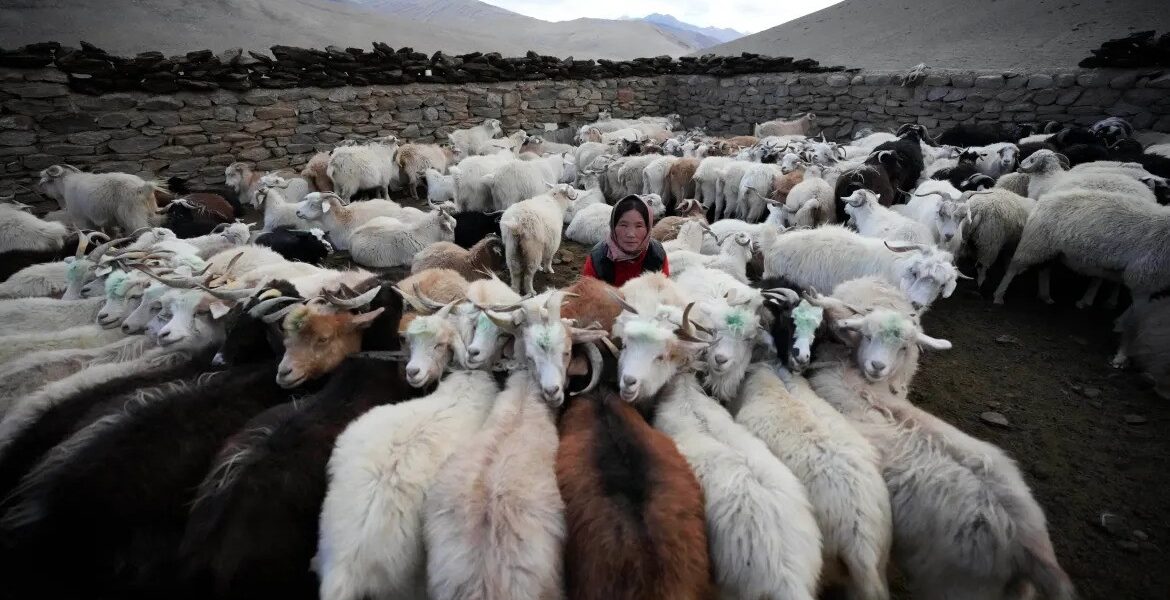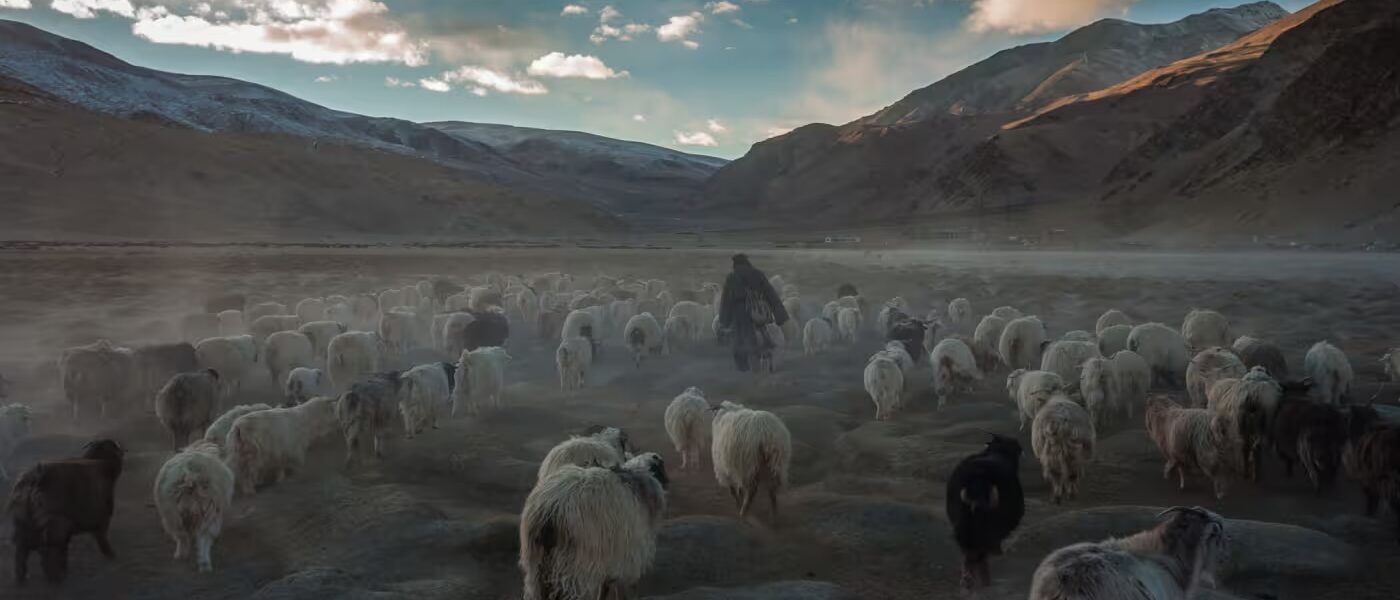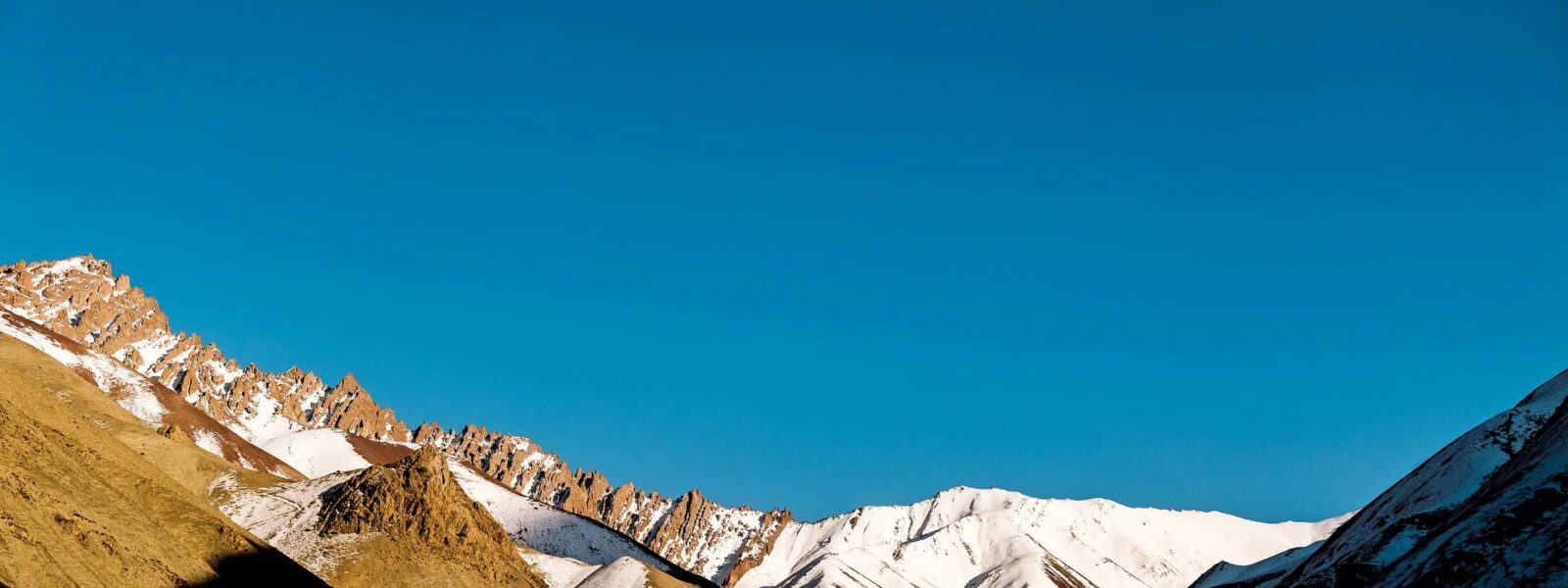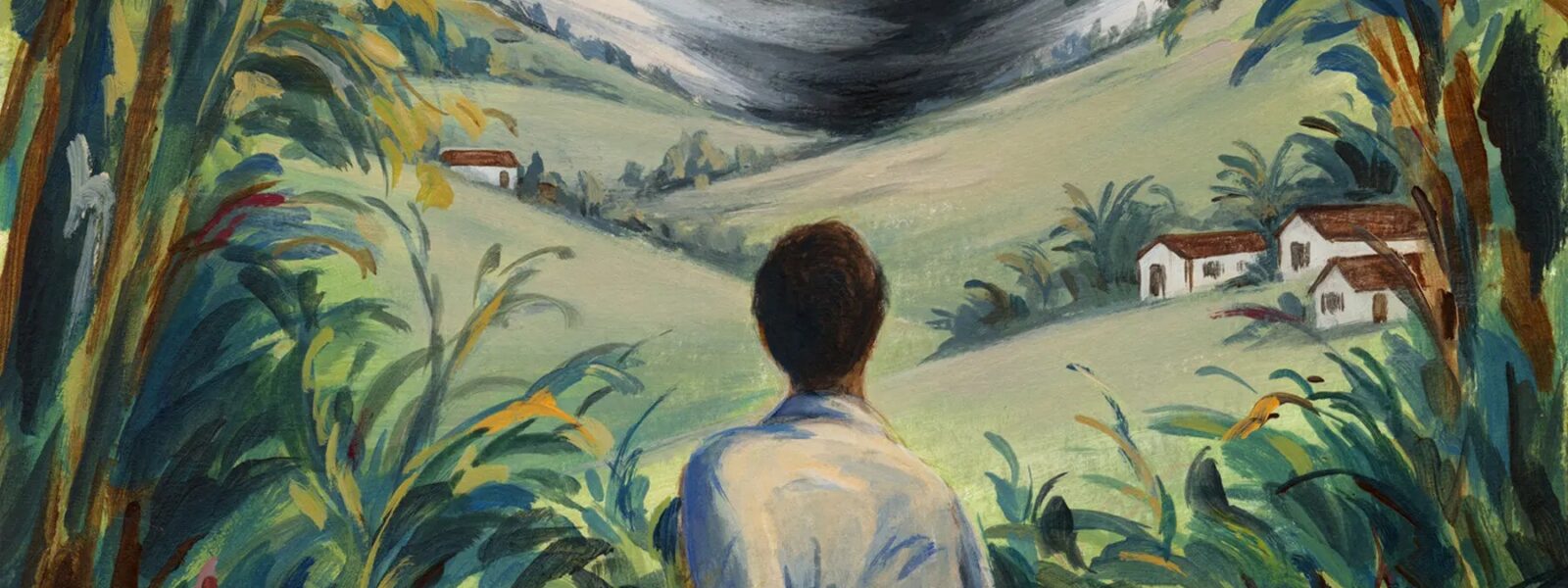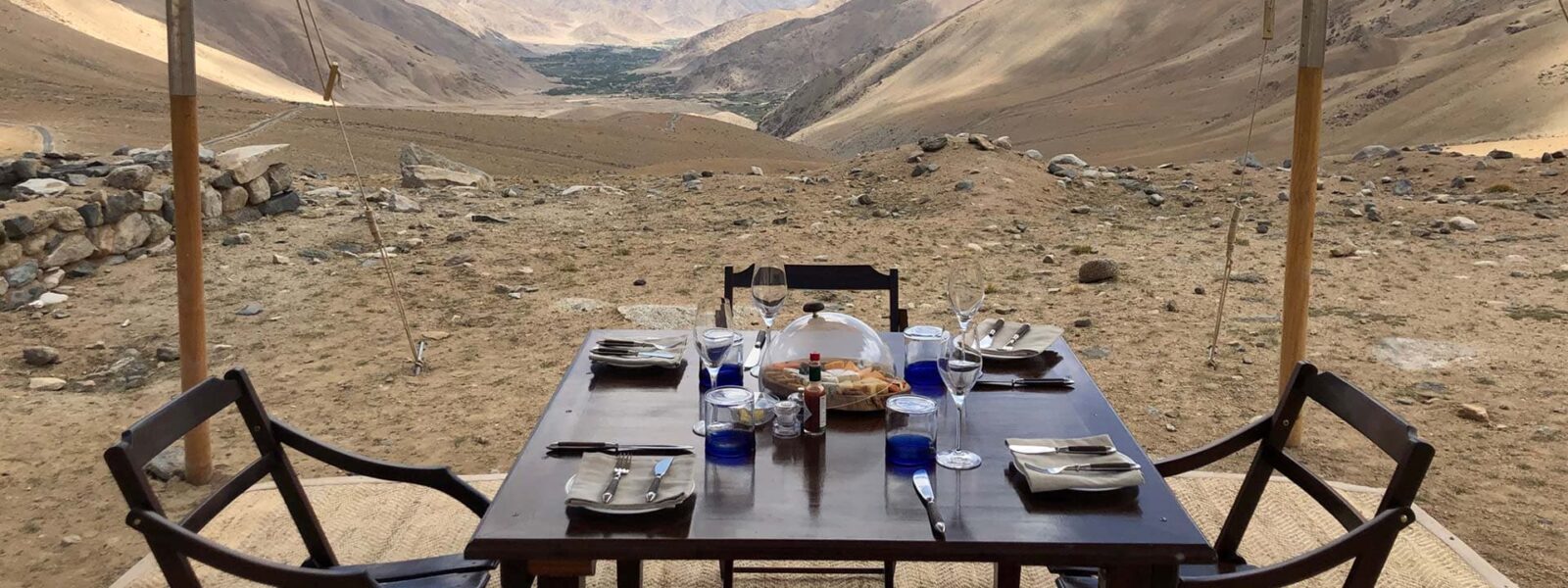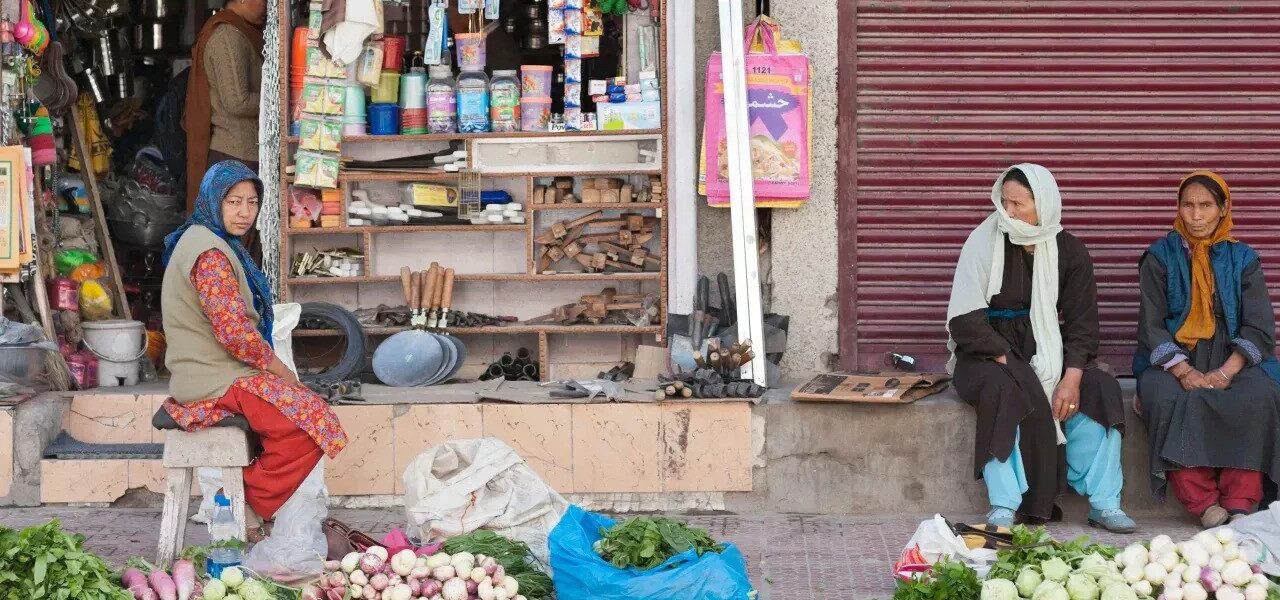Ladakh, often referred to as the “Land of High Passes,” is renowned for its breathtaking landscapes, rich cultural heritage, and serene monasteries. Among its many natural wonders, the sacred waterfalls stand out as hidden gems, offering both spiritual solace and adventurous trekking opportunities. As we step into 2025, let’s embark on a journey to discover these mystical cascades and the treks that lead to them.
🏔️ Why Ladakh’s Waterfalls are a Hidden Treasure?
🌸 The Spiritual and Cultural Significance of Ladakh’s Waterfalls
In Ladakh, waterfalls are more than just natural spectacles; they hold deep spiritual and cultural importance. Many of these cascades are considered sacred by the local Buddhist communities. The pristine waters are often used in religious rituals, symbolizing purity and the flow of life. Monasteries nestled near these waterfalls incorporate the soothing sounds of cascading water into their daily chants, creating a harmonious blend of nature and spirituality. Legends abound, telling tales of enlightened monks meditating beside these falls, seeking enlightenment and inner peace.
🏞️ Ladakh’s Unique Geography: How Waterfalls Form in the High-Altitude Desert?
Ladakh’s arid landscape, characterized by rugged mountains and sparse vegetation, might seem an unlikely place for waterfalls. However, the region’s unique geography plays a pivotal role in their formation. Glacial meltwater from the towering peaks feeds numerous streams, which, combined with monsoon rains, give birth to these stunning waterfalls. The contrast of cascading water against the stark, barren mountains creates a mesmerizing visual. Surrounding these waterfalls, one can find pockets of lush greenery, harboring unique Himalayan flora and fauna, making them biodiversity hotspots in an otherwise desolate terrain.

🥾 Best Sacred Waterfall Treks in Ladakh for 2025
🌿 Trek to Turtuk Waterfall – A Hidden Himalayan Marvel
Turtuk, a quaint village near the Indo-Pak border, is home to the serene Turtuk Waterfall. Encircled by towering mountains and lush flora, this cascading marvel offers trekkers a blend of natural beauty and cultural immersion. The trail to the waterfall meanders through apricot orchards and traditional Balti hamlets, providing glimpses into the local way of life. The trek is moderately challenging, making it suitable for both novice and experienced hikers. The best time to visit is during the summer months, from June to August, when the waterfall is in full flow, and the weather is pleasant.
❄️ The Frozen Waterfalls of Ladakh – A Winter Wonderland
While Ladakh’s summers unveil gushing waterfalls, the winter months transform them into majestic ice formations. One of the most renowned is the frozen waterfall along the Chadar Trek route. Trekkers traverse the icy surface of the Zanskar River, with the frozen cascade serving as a highlight of the journey. The surreal blue hues of the ice, combined with the stark white snow, create a dreamlike landscape. However, winter treks in Ladakh are demanding and require thorough preparation, proper gear, and acclimatization to the sub-zero temperatures.
⏳ Planning Your Ladakh Waterfall Trekking Adventure in 2025
📅 Best Time to Visit Ladakh’s Waterfalls for Trekking
Timing is crucial when planning a trek to Ladakh’s waterfalls. The summer months, from June to September, are ideal for most treks, offering mild temperatures and accessible trails. During this period, the waterfalls are fed by glacial melt, presenting a spectacular sight. For those interested in witnessing frozen waterfalls, January and February are the prime months, but be prepared for extreme cold and challenging conditions.
🎒 Essential Gear & Packing List for High-Altitude Waterfall Treks
Embarking on a high-altitude trek requires meticulous preparation. Here’s a checklist to ensure a safe and comfortable journey:
- Clothing:
- Thermal base layers
- Insulating mid-layers
- Waterproof and windproof outer shell
- Warm gloves, beanie, and neck gaiter
- Sturdy, waterproof trekking boots
- Equipment:
- Trekking poles
- High-quality backpack with rain cover
- Hydration system or water bottles
- Sleeping bag rated for low temperatures
- Headlamp with extra batteries
- Miscellaneous:
- First aid kit
- Sunscreen and lip balm with SPF
- Personal identification and necessary permits
- Energy bars and snacks
- Multi-tool or knife
Proper gear not only ensures comfort but also enhances safety during the trek.
🛂 Permits & Regulations for Trekking in Ladakh’s Remote Waterfall Regions
Many trekking routes in Ladakh, especially those near international borders or sensitive areas, require permits. It’s essential to check the latest regulations before your journey. The local authorities in Leh can provide updated information and issue the necessary permits. Additionally, adhering to eco-friendly practices, such as carrying back all waste and minimizing environmental impact, is crucial to preserve the pristine beauty of these regions.
🚗 How to Reach Ladakh’s Sacred Waterfalls?
🛤️ Best Routes from Leh to Ladakh’s Waterfalls
Leh serves as the primary gateway to Ladakh’s waterfalls. Depending on your destination, various modes of transportation can be considered:
-
- Turtuk Waterfall:
- By Road 🚙: A scenic 200 km drive from Leh via the Nubra Valley. The journey takes around 6-7 hours, passing through the breathtaking Khardung La Pass (5,359m).
- By Bike 🏍️: Adventure enthusiasts can opt for a motorbike ride, making stops at panoramic viewpoints along the way.
- By Trek 🥾: Short hikes from Turtuk village lead directly to the waterfall.

-
- Tambis Waterfall:
- By Road 🚗: Located in Kargil district, approximately 8-9 hours from Leh via the Srinagar-Leh Highway.
- By Trek 🚶♂️: A moderate-level trek through rugged terrain, best attempted during the summer months.

-
- Chilling Waterfall:
- By Road 🚘: About 2 hours from Leh, making it one of the most accessible waterfalls in Ladakh.
- By River Rafting 🚣♂️: For adventure seekers, the Zanskar River rafting route includes a stop near the waterfall, offering a thrilling way to reach the site.

- Hundri Waterfall:
- By Road 🚗: Located in the Nubra region, requiring a long yet scenic drive from Leh.
- By Trek 🥾: A short trek, recommended for intermediate hikers.
🌿 Eco-Tourism & Responsible Trekking in Ladakh
🍃 Sustainable Trekking Practices to Preserve Ladakh’s Natural Beauty
Ladakh’s delicate ecosystem requires responsible travel. Here’s how you can contribute:
✅ Carry all waste back – Avoid littering and use eco-friendly products.
✅ Respect local customs and monasteries – Many waterfalls hold religious significance.
✅ Avoid using plastic bottles – Opt for refillable bottles with a water purification system.
✅ Choose eco-friendly homestays – Support local communities by staying in sustainable accommodations.
✅ Stick to designated trekking paths – Prevent soil erosion and protect fragile flora.
🦅 Wildlife & Flora You Might Encounter on Ladakh’s Waterfall Treks
Ladakh’s waterfalls are home to unique biodiversity:
🦅 Himalayan Griffon – One of the world’s largest vultures, soaring above the valleys.
🐏 Blue Sheep (Bharal) – Frequently spotted grazing on rocky slopes.
🦊 Red Fox – A rare sight, often seen near water sources.
🌿 Sea Buckthorn Berries – A nutritious superfood growing near riverbanks.
💐 Edelweiss & Wild Himalayan Poppies – Found in lush patches around waterfalls.

❓ FAQs About Trekking to Ladakh’s Sacred Waterfalls
1. What are the best months to trek to Ladakh’s waterfalls?
☀️ Summer (June – September) is ideal, with clear trails and gushing waterfalls.
2. Are permits required for trekking to sacred waterfalls in Ladakh?
📜 Yes, certain areas like Nubra Valley and Zanskar require Inner Line Permits (ILP), which can be obtained in Leh.
3. What fitness level is required for Ladakh waterfall trekking?
💪 Moderate to high fitness is needed due to high-altitude trekking challenges.
4. Can I visit Ladakh’s sacred waterfalls in winter?
❄️ Yes, but extreme cold and snowfall make access difficult. Frozen waterfalls, like those along the Chadar Trek, are winter highlights.
5. Are there homestays or camping options near Ladakh’s waterfalls?
🏕️ Yes! Many waterfalls have nearby homestays and eco-camps, offering an immersive experience with local families.
6. How do I acclimatize properly for high-altitude trekking?
🗻 Stay in Leh for at least 2-3 days before trekking, drink plenty of water, and avoid strenuous activity initially.
📝 Conclusion: Why Ladakh’s Waterfalls Should Be on Your 2025 Bucket List
Ladakh’s sacred waterfalls are more than just natural wonders; they are spiritual sanctuaries, hidden trekking gems, and biodiversity hotspots. Whether you seek adventure, tranquility, or cultural immersion, these waterfalls promise an unforgettable experience in 2025.
👉 Plan your Ladakh trek now! Respect nature, embrace local traditions, and witness the mystical beauty of Ladakh’s waterfalls. 🌿💦
🌟 Customer Testimonial
“Trekking to Turtuk Waterfall was a life-changing experience! The landscape, the serenity, and the cultural richness of Ladakh made this trip unforgettable. I highly recommend it to anyone looking for adventure and peace at the same time!”
– David Thompson, Canada 🇨🇦, Travel Photographer 📷
Ladakh sacred waterfalls
Ladakh sacred waterfalls | The journey through Ladakh mirrors the very essence of unraveling unknown horizons, as its dramatic landscapes and unique cultural identity awaken the deepest sense of wonder and exploration. Ladakh sacred waterfallsdelves into this realm where inner peace intertwines with the wild, untouched beauty of Ladakh. From the snow-capped peaks to the serene monasteries, every step in Ladakh is a step toward self-discovery. The mountains, ancient paths, and unspoken mysteries stretch before travelers, offering a meditative experience where each encounter feels both effortless and transformative. Whether it’s trekking across remote valleys or sitting quietly beside a sacred lake, Ladakh invites those who seek a deeper connection to the natural and spiritual world.

Ladakh sacred waterfalls
The monasteries of Ladakh stand as living monuments to the region’s profound spiritual heritage. With origins dating back over a thousand years, these ancient structures are both places of worship and repositories of art, culture, and wisdom. Hemis Monastery, one of the largest in Ladakh, is renowned for its annual festival, featuring colorful mask dances performed by monks. The history of these monasteries reflects Ladakh’s role as a crossroads between India, Tibet, and Central Asia, where religious and cultural influences have intertwined over the centuries.
The Tibetan Buddhist influence is especially evident in the architecture and daily life of the monks. Prayer wheels, intricate murals, and the soft hum of chants fill the air as visitors explore the monastery grounds. Each monastery, from the remote Lamayuru to the awe-inspiring Thiksey, offers a window into the spiritual heart of Ladakh. These centers of meditation, learning, and community life continue to thrive, preserving traditions that have shaped Ladakh for generations.
Ladakh sacred waterfalls
Ladakh is a destination that transcends mere travel. It offers a journey that touches both the outer and inner landscapes, making it a perfect setting for those who seek to unravel their own unknown horizons. The region’s breathtaking scenery—from towering mountain ranges to hidden valleys—provides not just an escape but a space for contemplation and growth. Ladakh’s culture, deeply rooted in Buddhist practices, invites visitors to reflect on their own lives and the world around them.
Ladakh’s people, known for their warmth and hospitality, add to the richness of the experience. Villages like Sumda Chun and the legendary Nubra Valley introduce travelers to a way of life that is intricately connected to nature and spirituality. Staying in local homestays allows for immersive experiences where one can learn about traditional Ladakhi customs, share meals made from local produce, and participate in community rituals.

Beyond its natural beauty, Ladakh offers a unique opportunity to explore oneself. The vastness of the region’s plateaus and the clarity of its skies seem to mirror the vastness of the human spirit. Whether it’s standing atop a mountain pass at 18,000 feet or meditating in a centuries-old monastery, Ladakh helps unravel the unknown horizons within each traveler.
Finding the Best Ladakh sacred waterfalls in Ladakh
Finding the best places in Ladakh to experience “Ladakh sacred waterfalls” involves venturing off the beaten path. Ladakh’s lesser-known treks, such as those leading to secluded monasteries or high-altitude lakes, offer unparalleled opportunities for solitude and reflection. The Markha Valley trek, for instance, takes travelers through verdant valleys, ancient villages, and high-altitude passes, allowing for both physical and spiritual exploration.
Ladakh’s iconic lakes, including Pangong Tso and Tso Moriri, are ideal spots for quiet contemplation. Their still waters reflect the sky, creating a mesmerizing landscape that feels timeless and infinite. Sitting beside these lakes, especially at dawn or dusk, brings an overwhelming sense of peace and connection with nature.

For those interested in Ladakh’s spiritual heritage, exploring monasteries such as Alchi, Phyang, or Diskit can be a transformative experience. These sites are not just places of worship but also centers of art, philosophy, and wisdom. Visiting these monasteries, with their ancient murals and intricate statues, offers insight into Ladakh’s rich cultural tapestry.
Ladakh’s Atmosphere and Ladakh sacred waterfalls
Ladakh’s atmosphere is unlike any other place on Earth. The stark contrasts between the rugged mountains and the serene, tranquil monasteries create an environment that feels both raw and sacred. The traditional decor in Ladakhi homes and religious sites reflects this balance, with mud-brick houses adorned with prayer flags and colorful thangkas (Buddhist paintings) that add warmth and spiritual meaning to the space.

The interiors of Ladakhi homes, often simple and functional, are filled with symbols of devotion. Small shrines dedicated to Buddhist deities are common, and the air is often fragrant with incense. The use of earthy materials, like stone and wood, along with brightly colored textiles, creates an inviting and peaceful space, perfect for relaxation and reflection.
Traditional Ladakh sacred waterfalls
Traditional Ladakh sacred waterfallsis an integral part of the region’s identity, offering a unique blend of flavors that reflect its harsh climate and remote location. Hearty, warming dishes such as thukpa (noodle soup) and momos (dumplings) provide the sustenance needed to endure Ladakh’s cold temperatures. Skyu, a thick stew made with root vegetables and barley, is another staple of the Ladakhi diet, designed to nourish both body and spirit.

Drinks like butter tea, made with yak butter and salt, are a must-try for anyone visiting Ladakh. This rich, savory drink is not only warming but also hydrating, making it essential for those venturing into the high-altitude regions of Ladakh. Chang, a local barley beer, is often enjoyed during festivals and community gatherings, adding a sense of joy and camaraderie to any occasion.
Live Cultural Ladakh sacred waterfallsin Ladakh
Ladakh is home to a vibrant cultural scene, with festivals and live performances held throughout the year. The Hemis Festival, which celebrates the birth of Guru Padmasambhava, is one of the largest and most famous events in the region. Monks dressed in elaborate costumes perform cham dances, which depict the triumph of good over evil. The energy of the festival, with its bright colors, rhythmic music, and elaborate rituals, draws visitors from around the world.
Other local festivals, such as the Losar (New Year) and Ladakh Festival, provide visitors with the chance to witness traditional dance, music, and crafts that have been passed down through generations. These events are more than just entertainment; they are a celebration of Ladakh’s rich cultural heritage and its deep connection to the spiritual world.
Trekking and Outdoor Activities Ladakh sacred waterfalls
Ladakh is a trekker’s paradise, offering some of the most stunning and challenging routes in the world. From the famous Ladakh sacred waterfalls, which follows the frozen Zanskar River, to lesser-known routes like the Sham Valley or Nubra Valley treks, Ladakh’s landscape offers endless possibilities for adventure and discovery. The high-altitude passes, such as Khardung La and Chang La, offer breathtaking views of snow-capped peaks and sprawling valleys.

Wildlife enthusiasts will also find Ladakh sacred waterfallsto be a haven for rare species such as the Ladakh Urial, Himalayan Spituk Gustor Festival, and the Spituk Gustor Festival. Winter expeditions to spot the elusive Ladakh sacred waterfallsin the Hemis National Park are gaining popularity among wildlife photographers and conservationists alike.
The Importance of Preserving Ladakh’s Ladakh sacred waterfalls
Ladakh’s rich cultural and environmental Ladakh sacred waterfallsis under increasing threat from climate change and mass tourism. Preserving this unique region requires careful attention to sustainable tourism practices. Choosing eco-friendly accommodations, supporting local businesses, and participating in community-led conservation efforts are just a few ways that visitors can contribute to the preservation of Ladakh’s natural and cultural heritage.
Ladakh’s people have a long history of living in harmony with their environment, practicing sustainable agriculture, and maintaining a deep spiritual connection to the land. Visitors are encouraged to follow the same principles, leaving no trace and respecting the fragile ecosystems that make Ladakh so special.
Etiquette and Tips for Visiting Ladakh sacred waterfalls
Before visiting Ladakh, it’s essential to understand and respect the region’s customs and traditions. As a deeply spiritual place, Ladakh requires visitors to dress modestly, especially when visiting monasteries or attending religious ceremonies. Always ask for permission before taking photographs inside monasteries or of local people.
Medical Ladakh sacred waterfalls
Spa trail Ladakh sacred waterfalls
Ladakh sacred waterfalls

When Ladakh sacred waterfalls, remember to stay on designated paths to avoid damaging fragile ecosystems. Tipping is appreciated but not expected in most settings, and it’s important to carry cash, as many remote areas do not accept credit cards. Lastly, be mindful of altitude sickness and take the necessary precautions when traveling to higher elevations.
Conclusion: Enjoying Ladakh sacred waterfallsin Ladakh
Ladakh is a place where the physical and spiritual worlds converge, offering travelers a journey unlike any other. Whether you’re trekking across high-altitude deserts, exploring ancient monasteries, or simply sitting in quiet reflection by a mountain lake, Ladakh invites you to unravel your own unknown horizons. By respecting the region’s traditions and practicing sustainable tourism, you help ensure that Ladakh’s beauty and cultural richness will be preserved for future generations to explore and enjoy.
